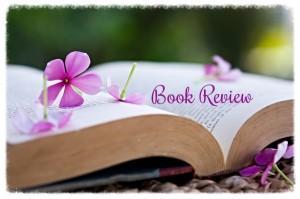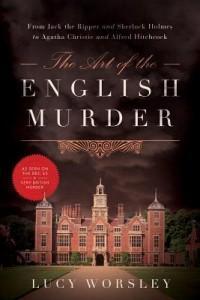Title: The Art of the English Murder: From Jack the Ripper and Sherlock Holmes to Agatha Christie and Alfred Hitchcock
Author:
ISBN: 9781605986340
No. of Pages: 336
Genre: Nonfiction
Origins: Pegasus Books
Release Date: 15 October 2014
Bottom Line: Interesting look at the evolution of the murder mystery
 Synopsis:
Synopsis:
“Murder—a dark, shameful deed, the last resort of the desperate or a vile tool of the greedy. And a very strange, very English obsession. But where did this fixation develop? And what does it tell us about ourselves?
The Art of the English Murder, Lucy Worsley explores this phenomenon in forensic detail, revisiting notorious crimes like the Ratcliff Highway Murders, which caused a nationwide panic in the early nineteenth century, and the case of Frederick and Maria Manning, the suburban couple who were hanged after killing Maria’s lover and burying him under their kitchen floor. Our fascination with crimes like these became a form of national entertainment, inspiring novels and plays, prose and paintings, poetry and true-crime journalism. At a point during the birth of modern England, murder entered our national psyche, and it’s been a part of us ever since. The Art of the English Murder is a unique exploration of the art of crime—and a riveting investigation into the English criminal soul by one of our finest historians.”
Thoughts: As Ms. Worsley sets out to explain, the modern-day fascination with murder mysteries and sensational headlines is nothing new. In fact, it has a long history of popularity among newspaper headlines and popular literature. In The Art of the English Murder, Ms. Worsley explores how changes in English society created a larger interest in such gruesome crimes and how the attraction found its way into literature.
Divided into various eras, The Art of the English Murder starts with a discussion of the Ratcliff Highway Murders and Thomas de Quincey’s tongue-in-cheek admiration of it and ends with Alfred Hitchcock and the thriller novel. Along the way, in addition to exploring other popular murderers and their crimes, Ms. Worsley explains this fascination as a direct result of other outside forces. For the Ratcliff Highway murders, they captured people’s interest not because it was a novel crime but because a shift away from an agrarian society caused greater numbers of people inhabiting the cities. A larger number of strangers congregating in one area meant that it was easy for a criminal to slip in among them unnoticed. In other words, it was one of the first examples where the murderer could have been anyone and caused a sensation of fear and panic among citizens. Similarly, the creation of police departments and especially detectives gave rise to the detective novel, while post-war mysteries became popular because they were neat little puzzles properly solved by the end of the novel and as far removed from the brutalities of war as one could get. As English society shifted from isolated villages to a connectedness previously unimaginable, so too did the murder mystery.
Along with highlighting famous murders that were frequently used by writers as inspiration, Ms. Worsley also highlights those authors who so influenced the genre. Everyone from Charles Dickens, Wilkie Collins, and Sir Arthur Conan Doyle to Dorothy Sayers and Agatha Christie get a nod as they each changed the face of murder literature for their generation. Ms. Worsley makes her connections between fact and fiction eruditely, drawing on detailed research, historical documentation, and other interviews and biographies needed to expound upon her subject matter. Into it all, Ms. Worsley introduces a breezy writing style that is enjoyable in spite of the gloomy topic.
The Art of the English Murder is a great way to sit down and reflect on the ever-changing novel and society’s influence on those changes. Modern readers may find it completely unimaginable that everyday citizens not only flocked to crime scenes but were also permitted free access to them, with the ability to even view the corpse. At the same time, life without a police force or detective department is a foreign concept indeed. Yet, these situations did exist, and the murder mystery novel had to adjust to each change in attitude and crime scene detection. Ms. Worsley brings the evolution of this popular genre into greater focus through her sometimes amusing jaunts into history.
